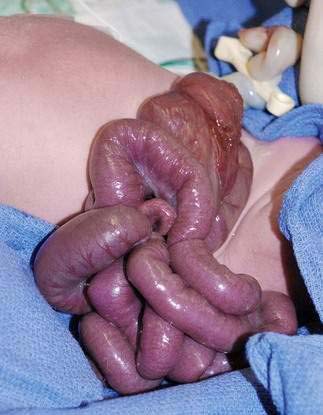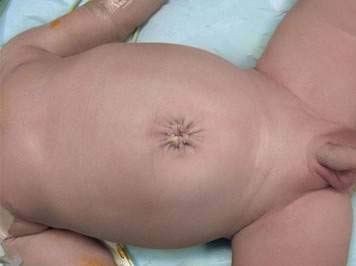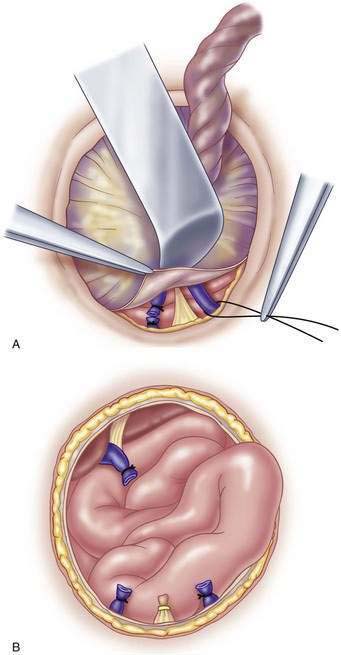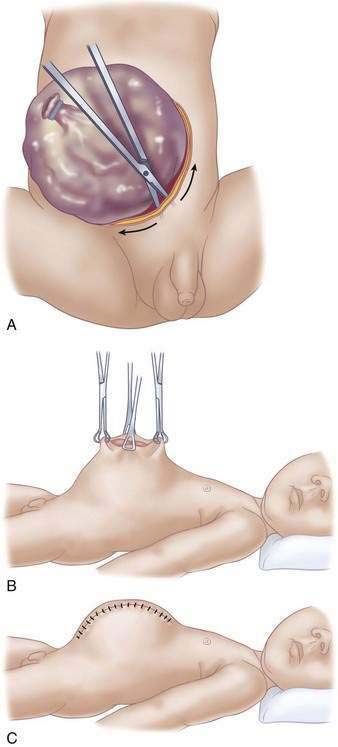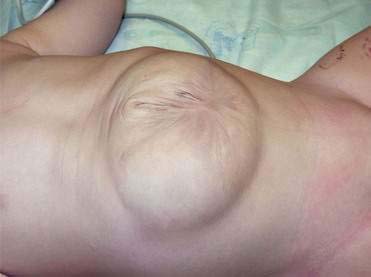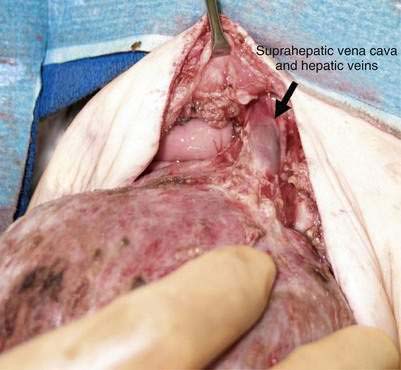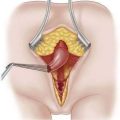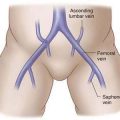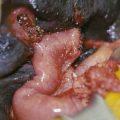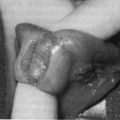CHAPTER 25 Gastroschisis and Omphalocele
Step 1: Surgical Anatomy
Step 2: Preoperative Considerations
Gastroschisis
Omphalocele
Step 3: Operative Management
Gastroschisis
Omphalocele
Step 4: Postoperative Care
Step 5: Pearls and Pitfalls
Archer LP, Billmire DA, Falcone RA, et al. Reconstruction of an acquired abdominal wall defect in a neonate using acellular human dermis. Plast Reconstruct Surg. 2006;118:163e-166e.
Oldham KT, Coran AG, Drongowski RA, et al. The development of necrotizing enterocolitis following repair of gastroschisis: a surprisingly high incidence. J Pediatr Surg. 1988;23:945-949.
Schlatter M, Norris K, Uitvlugt N, et al. Improved outcomes in the treatment of gastroschisis using a preformed silo and delayed repair approach. J Pediatr Surg. 2003;38:459-464.
Weber TR, Au-Fliegner M, Downard C, Fishman S. Abdominal wall defects. Curr Opin Pediatr. 2002;14:491-497.

